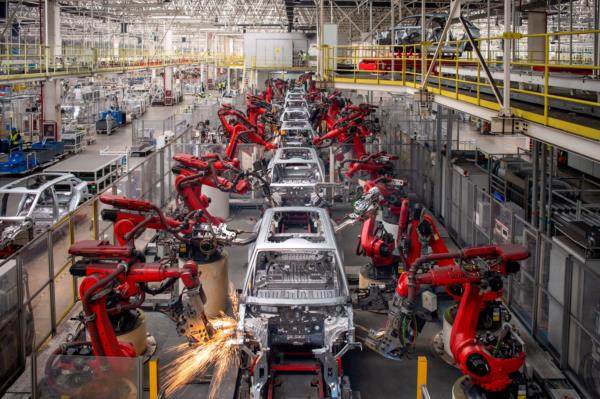
China's manufacturing industry is facing another setback as factory activity continues to shrink. The latest purchasing managers' index (PMI) data reveals a prolonged period of weakness, indicating a troubled economy with limited demand.
The PMI, a widely used gauge of factory activity, registered a reading below the crucial 50-point mark for the sixth consecutive month. The figure of 49.8 for September further underscores the challenges faced by China's manufacturing sector. Any reading below 50 indicates a contraction in activity, while a reading above 50 signifies expansion.
The ongoing contraction is primarily attributed to weakened demand, both domestically and internationally. The prolonged trade tensions between China and the United States, coupled with a global economic slowdown, have contributed to reduced demand for Chinese products. This decline in demand has put significant pressure on China's manufacturing sector, leading to decreased production and factory closures.
Additionally, domestic demand has been hindered by a multitude of factors. China has been grappling with a decline in consumption and investment growth, which has curbed the demand for manufactured goods. The Chinese government's ongoing efforts to pivot the economy towards a more consumption-driven model are yet to yield substantial results in reviving the manufacturing industry.
Furthermore, the global COVID-19 pandemic has significantly impacted China's economy. The virus outbreak disrupted supply chains, caused widespread lockdowns, and reduced consumer spending, all of which have further dampened demand for factory-produced goods. Despite China's success in containing the virus and gradually reopening its economy, the recovery within the manufacturing sector has been sluggish.
The challenges faced by China's manufacturing industry are reflected in the sub-indexes of the PMI report. The production sub-index, which measures output levels, fell to 51 for September, indicating a slowdown in production growth. New orders also dropped, falling to 49.7, resulting in fewer contracts and orders for factories. Furthermore, overseas orders continued to decline, highlighting the impact of global trade tensions on China's export-oriented manufacturing sector.
The Chinese government has been implementing various measures to support the struggling manufacturing industry. These include tax cuts, increased infrastructure spending, and financial support for businesses. Additionally, the government has taken steps to optimize the business environment and attract foreign investment. However, the impact of these measures is yet to be fully realized, as the manufacturing sector remains under significant strain.
The shrinking factory activity in China not only poses challenges for the country's overall economic growth but also has global implications. China is a major player in the global supply chains, and any disruption or contraction in its manufacturing industry can have ripple effects on other economies worldwide.
As China continues to navigate the complex economic landscape, the revival of factory activity and increased demand for manufactured goods will be crucial. With ongoing efforts to boost domestic consumption, optimize business conditions, and navigate global trade tensions, China aims to revitalize its manufacturing sector and strengthen its position in the global economy. However, it remains to be seen how long it will take for these measures to have a meaningful impact and pave the way for a sustained recovery.







